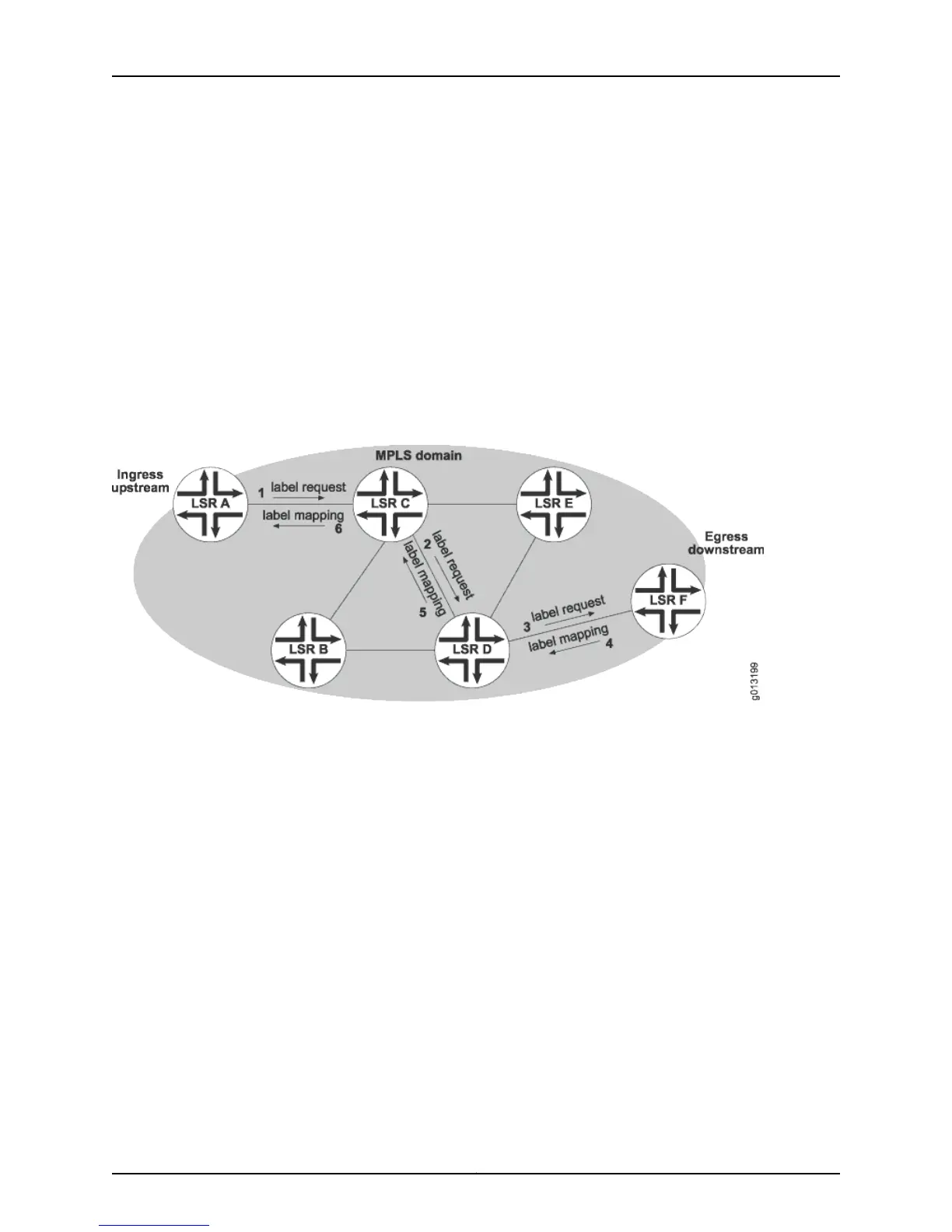In Figure 53 on page 228, LSR A sends a label request to LSR C. Before LSR C responds, it
sends its own request to LSR D. LSR D in turn makes a request for a label to LSR F. When
LSR F returns an acceptable label to LSR D, that label is for use only between LSRs D
and F. LSR D sends a label back to LSR C that this pair of LSRs will use. Finally, LSR C
sends back to LSR A the label that they will use. This completes the establishment of
the LSP.
Downstream-unsolicited means that MPLS devices do not wait for a request from an
upstream device before signaling FEC-to-label bindings. As soon as the LSR learns a
route, it sends a binding for that route to all peer LSRs, both upstream and downstream.
Downstream-unsolicited does not conserve labels, because an LSR receives label
mappings from neighbors that might not be the next hop for the destination; it is used
by BGP or LDP when adjacent peers are configured to use the platform label space.
Figure 53: LSP Creation, Downstream-on-Demand, Ordered Control
Independent control means that the LSR sending the label acts independently of its
downstream peer. It does not wait for a label from the downstream LSR before it sends
a label to its peers. When an LSR advertises a label to an upstream neighbor before it
has received a label for the FEC from the next-hop neighbor, the LSP is terminated at
the LSR. Traffic for the destination cannot be label-switched all the way to the egress
LSR. If no inner label is present, then the traffic is routed instead of switched.
In Figure 54 on page 229, LSR D learns a route to some prefix. LSR D immediately maps a
label for this destination and sends the label to its peers, LSR B, LSR C, LSR E, and LSR
F. In the topology-driven network, the LSPs are created automatically with each peer
LSR.
Copyright © 2010, Juniper Networks, Inc.228
JunosE 11.2.x BGP and MPLS Configuration Guide

